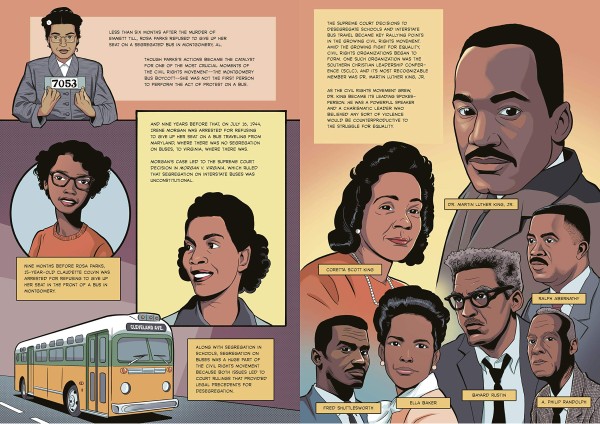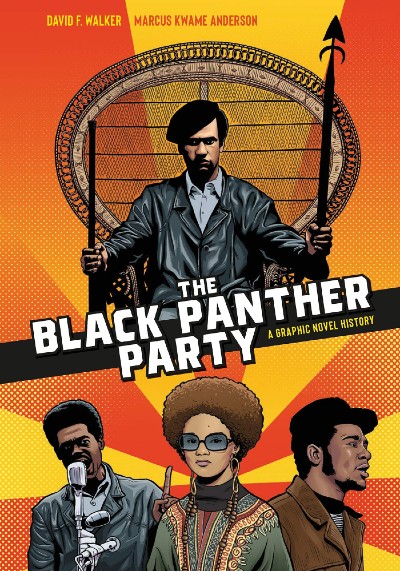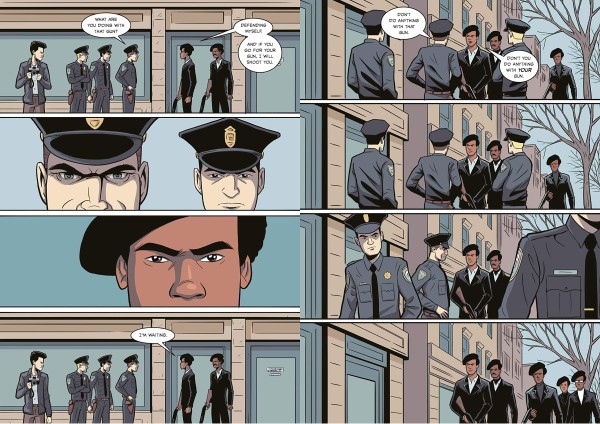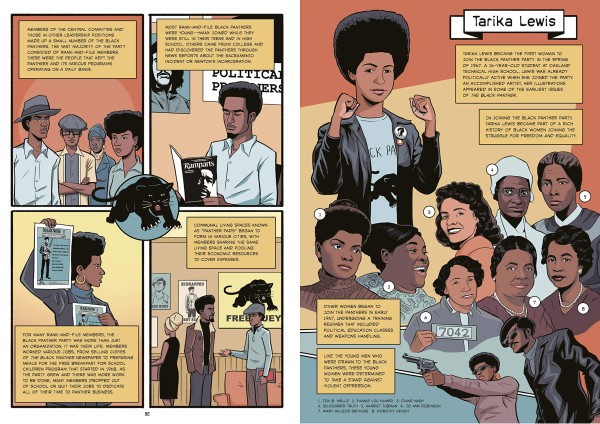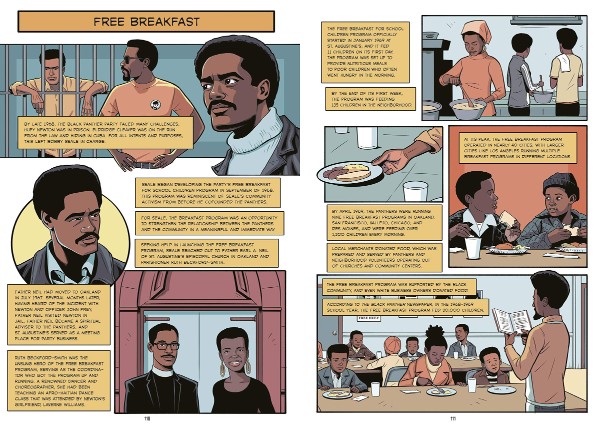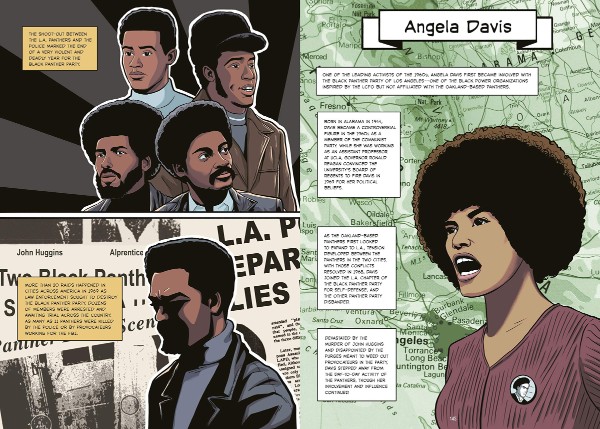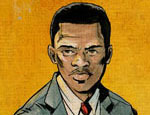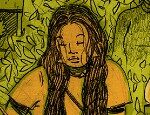Over half a century since the formation of the Black Panther Party – the African American revolutionary party founded in Oakland in 1966 by students Bobbly Seale and Huey P. Newton – its legacy remains a complicated one. In The Black Panther Party: A Graphic Novel History, a comics biography published by Ten Speed Press, writer David F. Walker and artist Marcus Kwame Anderson explore the party’s origins and history and, in the process, provide a quietly damning indictment on a socio-political landscape that has remained largely unaltered in the decades since.
This meticulously researched account of the organisation avoids the usual sole focus on the group’s rejection of the Civil Rights Movement’s non-violence and its adoption of confrontational tactics. Instead this is a broader, more comprehensive recounting that also gives weight to the vitally important social initiatives (“survival programs” that included the free breakfast for school children program) that the Panthers were involved in, and their commitment to the community they looked to serve.
As much visual essay as dramatised re-enactment, The Black Panther Party begins by exploring the socio-historical background of oppression and racism that led to the birth of both the Black Panthers and the Civil Rights Movement, and the different paths they took to facilitate their aims. The early days are examined in depth from their initial stand-offs with the police and their ’10-Point Program’ (as relevant a document now as it was when it was written in the 1960s) through to their televised presence at the Capitol Building in 1967.
As the years continue Walker and Anderson depict an organisation slowly torn apart by both factors external (their undermining and manipulative destabilisation by the FBI Counter-Intelligence Program) and internal (inner conflicts and clashes of ideology amongst the party’s prime movers). We witness such pivotal moments as the police murder of member Fred Hampton and the Panther’s escalating clashes with the legal authorities. In the latter years Newton’s descent and the party’s sidesteps into criminal enterprise result in its slow and drawn-out demise.
Anderson’s visuals (the artist is also responsible for both the mood-accentuating colouring and lettering) have an accessible clarity that allows the reader an immediate connection with a sprawling cast of historical characters. While there are certainly plenty of standard sequential, panel-to-panel sections it’s in the more text-heavy biographical segments where his art really shines, adopting a sense of graphic design in his pages that intuitively accommodates Walker’s necessarily detailed narration without ever being swept into a sea of text. Interspersed throughout the book are mini-biographies of the key players – Eldridge Cleaver, Emory Douglas, Fred Hampton, Angela Davis and many more – that give us immediate context, underlining their places and contributions to the movement.
To call a book like this topical is to miss the point. Topicality implies periodic relevance and the socio-political conditions and power imbalances that led to the formation of the Black Panther Party – that continue to enable and support the oppressive structures and systemic inequality that are built into every layer of society – are an all-pervading injustice that need to be constantly challenged and exposed. Graphic journalism/biography requires particular skills to accurately distil the essence of events without lapsing into superficiality, and Walker and Anderson work in perfect symbiosis here to achieve that. The Black Panther Party separates the legend of violent militancy from the actuality of something altogether more complex, providing a biography that is nuanced and extensive in scope but is also still unafraid to examine the flaws and failings of some of its significant players. A remarkable and essential piece of graphic history.
David F. Walker (W), Marcus Kwame Anderson (A/C/L) • Ten Speed Press, $19.99
Buy online from Gosh! Comics here
Review by Andy Oliver





